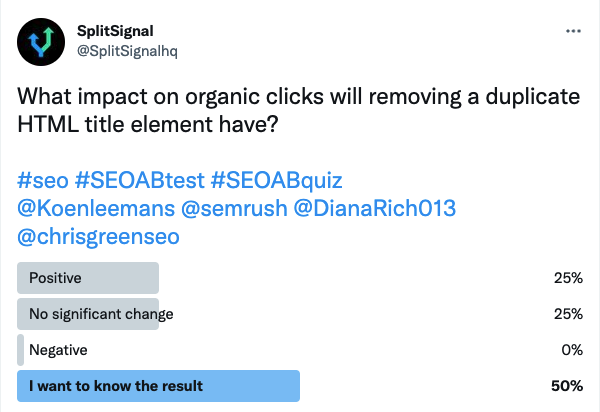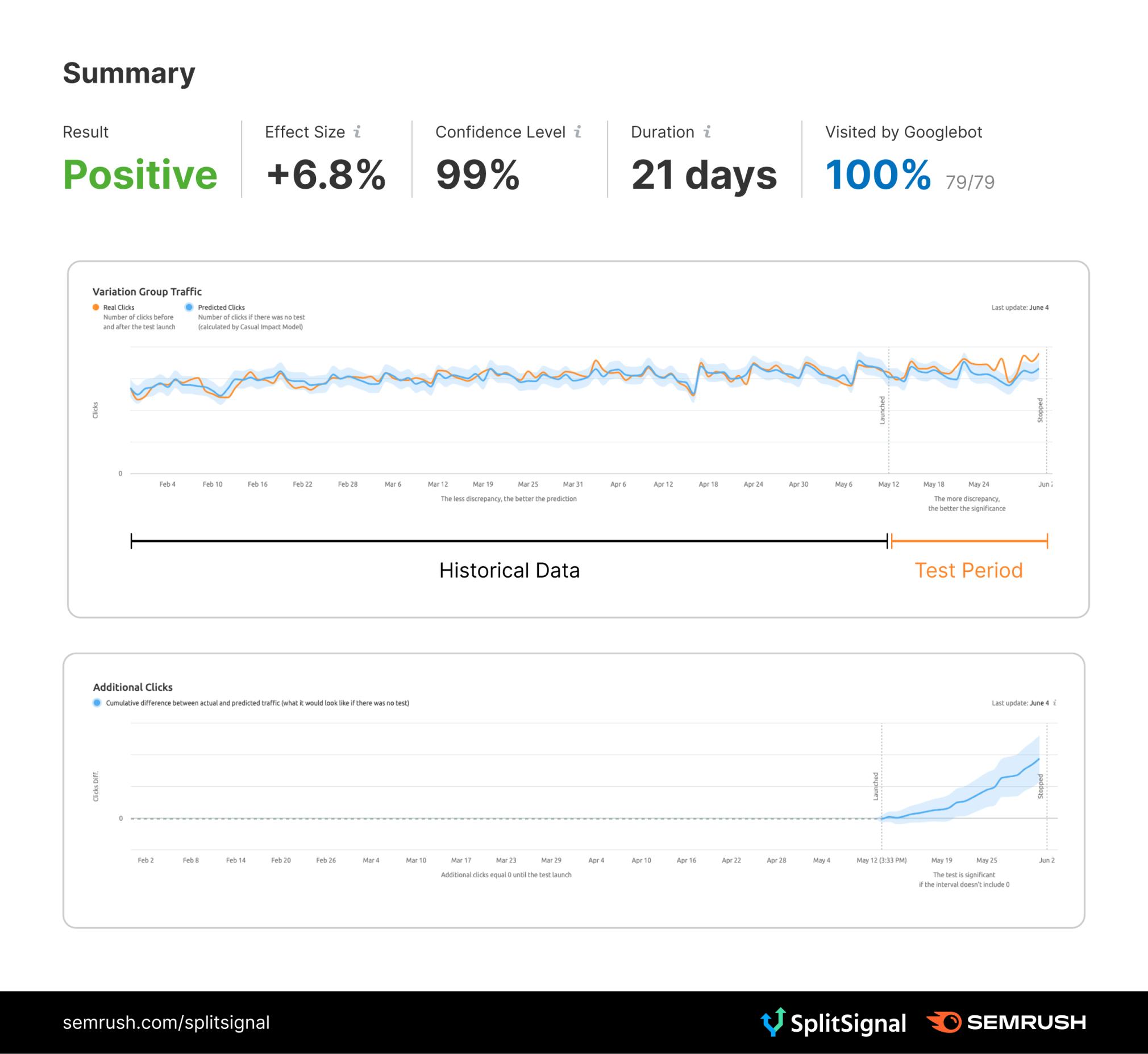Before you start: what do you know about SEO split-testing? If you’re unfamiliar with the principles of statistical SEO split-testing and how SplitSignal works, we suggest you start here or request a demo.
As always, before we publish our findings, we ask our Twitter followers to vote:

They are also encouraged to explain why they believe a change will have a positive or a negative result. This time around, only 25% got it right. You will soon find out why.
Introduction
The HTML Title tag has long been considered a mainstay of SEO and one of the most significant factors in on page SEO. It is, after all, the title of the document, so it should be treated with high importance.
But what happens if you have the title tag duplicated in your code?
<title> Page Title goes here </title>
And
<title> Page Title goes here </title>
Mozilla says quite strictly that you should only have one HTML title tag, and it should reside in the head of the document.
Google’s John Muller was asked this question directly, documented in this Search Engine Journal Article.
Question:
“Concerning the meta description of the page, I got the SEO tip to include a second meta description and title concerning this topic into the header.
Would this really make sense to Google?”
John Mueller’s answer:
“So, if you’re including a second meta description tag on a page, we will treat that the same as if you just extend the existing meta tag on the page.
…there’s no kind of bonus to using a second meta description tag on a page compared to just adjusting your existing one.
With regard to the title, that’s the same thing. It’s not that there’s any kind of a bonus attached to making a second title tag.
Essentially, you might as well just write a clear new title using the existing title tag.”
The site analyzed here had title tags duplicated, i.e, the same title tag was used in the head of the document twice. It also had additional elements in the body text marked up as <title> too.
We wanted to see what effect there would be if the duplication was removed and only one HTML title element was present, with the second duplicate title tag removed.
Note that it is common to refer to a title “tag” where the strict terminology is title element, with the <title> being an HTML element.
Google will also display how it chooses title tags and will do this on a search query-related basis.
Title tags are often rewritten ~ 75% of the time, and there is quite a lot of data showing that title tag rewriting is based on the length of the title tag, with the optimum being 55-65 characters. So it is interesting to also explore the behavior of title tag duplication.
The Hypothesis
A more correct and well-structured document ought to be better. Sending Google clear signals and being standards compliant is a sign of a better quality document.
Following Google’s guidelines and best practices is always good too!
The Test
The test looked at control URLs that retained the duplicate title and variation URLs with duplicate title tags removed in SplitSignal.
The test included 142 URLs with 63 control URLs and 79 validation URLs.
We ran 9404 tests and looked at the average position, click-through rate, and total clicks for the variant and control pages.
The test ran for 21 days following a fairly stable period.
The stability prior to the test is important.
During the test window, there were no major Google algorithm updates that could influence the result. During the very last part of the test period, the May 2022 Core Algorithm did hit, although it does not confound the result as the data shows.
The Results
The result was positive, giving a 6.8% improvement.
It is also clearly statistically significant, with the lower bound lean clearly going above the Y=0 line.
This gives a high 99% confidence level which means that the tested condition did have an impact that can be verified.

Why
By having two duplicate titles, any weighting and influence function is split between the two titles, and therefore less value is assigned to either.
There is nuance here in that the treatment of two duplicate titles might be more of a combination rather than a division.
Much is made of Google’s ability to render a page and understand the content and context so well that it almost doesn’t matter how sloppy and bloaty the code is (bravo Google).
However, this result does seem to suggest that title tag duplication and semantic correctness have some importance.
Who knew, having nice standards-compliant well-structured code is valuable!
This does emphasize the case for having all of your technical SEO ducks in a row.
What Google says and what Google does is not always consistent.
